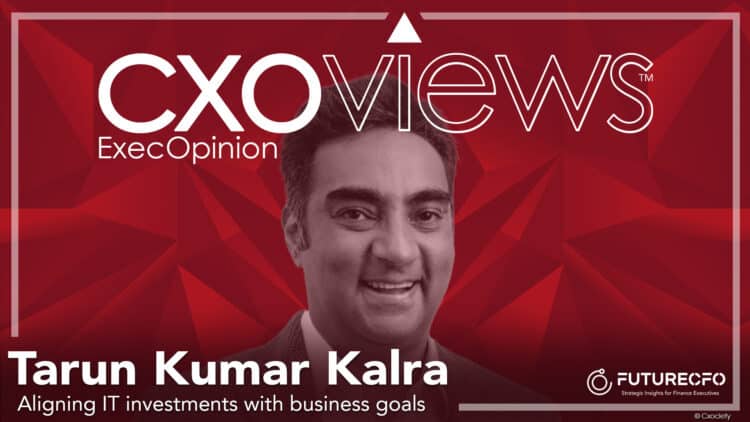As the business world's thirst for mastering technological advancements properly intensifies, with the seemingly never-ending developments in artificial intelligence, automation, and machine learning, it is expected that organisations steer their priorities towards investments on the IT side.
Finance leaders are already aware of such shifts, and it has been a part of the CFO agenda for quite some time now.
Organisations from different industries have been doing their research and heeding advices from various consultants regarding the digital transformation. As Winnie Law, CFO, Transformation, Technology and Operations (TTO), Global Functions and Fit for Growth at Standard Chartered, noted that in addition to IQ and EQ, finance leaders of today's world must all develop DQ or Digital Quotient to be able to translate data into strategies.
Along with IT investments, technical debts are also a point of consideration among finance leaders as it can dictate the financial health of the organisation moving forward, especially as it navigates around the changes brought about by digitalisation.
According to International Data Corporation (IDC), enterprise technical debt has evolved into a multifaceted challenge that demands the attention of all executive leadership, including CFOs.
In its earliest form, IDC says technical debt was synonymous with coding shortcuts: hasty decisions that aimed to meet deadlines but often led to messy, difficult-to-maintain code bases. It highlighted the importance of balancing short-term gains with long-term sustainability and quality.
Daniel Saroff, group vice president, Consulting and Research at IDC thinks that as companies become more digital, they need to actively measure and manage their tech debt leverage in the same way that they pay attention to their financial debt leverage. They also need to ensure that they are making regular payments against that debt to keep from becoming too highly leveraged in their tech stack.
It is then an imperative for organisations to be able to track the performance of their IT spending to align with their business goals.
Regular reviews
Tarun Kumar Kalra, vice president and head of sales - APAC at Apptio, an IBM Company, believes that organisations should establish a regular review cadence for their IT investments to ensure alignment with business goals.

Such reviews can encompass monthly leadership reviews to monitor IT performance and key performance indicators, quarterly business reviews with unit partners to assess IT service value, and an annual planning process to set future objectives.
Kalra concedes that frequent reviews can increase costs, particularly with external consultants, but notes that there are effective cost-saving strategies.
Visibility in IT spending is also an important factor to take note of in this journey. For Kalra, the Technology Business Management (TBM) framework is a key tool for improving visibility into IT spending.
He adds that organisations should also adopt a FinOps framework to further refine IT spending visibility. This approach, which centres on the three phases of FinOps—Inform, Optimise, and Operate—allows leaders to continuously assess IT spending, recommend improvements, and implement processes for better financial management.
"Together, these frameworks provide a comprehensive strategy for gaining clarity and control over IT expenditures."
To this matter, IDC developed a framework that outlines the critical steps required to measure and manage technical debt. Over time, the idea of technical debt expanded beyond custom code to encompass broader technology-related decisions within organisations, giving rise to the concept of enterprise tech debt.
IDC says organisations began to realise that tech debt can manifest in infrastructure, architectural choices, data management, and even the use of third-party software solutions.
Technical debt can also involve hidden IT costs, increased operational risks, compromised security, hindered innovation, and challenges in adapting to change.
However, much like the common financial debt, tech debt can be the result of a conscious decision as well. Just as organisations can take on financial debt for strategic business reasons, IDC says companies may tend to mindfully accept some levels of technical debt. The problem arises when it accumulates without making technological payments against that debt over time.
Finance and IT collaboration
Kalra believes that when it comes to IT spending, CFOs, CEOs, and other business-focused leaders are often the key stakeholders. He thinks that this is where the FinOps framework could offer a comprehensive, non-hierarchical approach that fosters collaboration between finance and IT teams across all levels and functions.
"By providing equal visibility into IT spending for professionals at every level, FinOps empowers leaders to make informed financial decisions with unprecedented clarity," Kalra says.
He adds that in order to achieve greater transparency into costs and business value, organisations must foster a culture of openness and accountability.
"Business leaders should use technology to benefit the enterprise as a whole, rather than operating in silos," Kalra notes.
Meanwhile, teams should be encouraged to understand and take responsibility for the costs associated with their actions. By promoting awareness among engineers, developers, and product owners, organisations can better control costs and proactively address issues.



